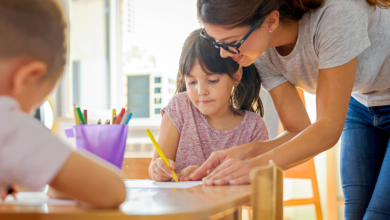How to Teach Your Kids to Care for the Planet

How to Teach Your Kids to Care for the Planet
Teaching your toddlers and young children how to care for the planet is important. Some people may feel it is too much for young minds to process and can cause unnecessary worry in their daily lives. Others may believe that now is the best time for children to learn how to care for the planet due to their curiosity and love for the outdoors.
Learning about environmental issues and prevention should be fun for kids. They enjoy activities such as playing in fallen leaves and going to the park. These activities provide an ideal opportunity to learn about the earth’s processes. In order to provide your child with a thorough understanding of environmental responsibility, follow the helpful tips outlined here:
Spend More Time in Nature
If you want to help your children become more interested in the world around them, spending time in nature is an excellent way to discuss complex natural processes in an easy-to-understand way. Whether you live in an urban or a rural area, learning opportunities abound.
If you live in an urban area, you can start the conversation with topics such as air pollution and the ozone layer. Explain that the rise in big cities around the world directly contributes to the climate problem so that children understand how the earth got to this point. Learning the reasons associated with environmental conditions will encourage your kids to think about how they can help.
For those who live in rural areas, it is easy to teach children about the processes of nature such as photosynthesis and how animals contribute to the life cycle of the planet. If the area is populated by farms, your kids will have a unique opportunity to learn about sustainability and farming. Try to illustrate the contrast between rural and city life, and have your kids compare both of them to understand how one directly affects the other.
Teach Kids about Gardening
If you take your child’s affinity for being outside and playing in the dirt as an opportunity to teach your child about gardening, they can learn all the benefits of growing their own food. Begin by showing them how trees grow, shed their leaves, and regenerate every spring. This explanation can be used to demonstrate how all vegetation grows, so not only will children be fascinated by the process of growing food, but they will learn a level of responsibility for the planet. In addition, gardening can expand a child’s palette and encourage them to try a broader range of fruits and vegetables.
If gardening isn’t something that you can easily undertake due to time or space constraints, there are still ways that kids can learn about the process of growing plants. Take your child to a farmer’s market so that he or she can learn about the reasons why locally grown produce is better for the environment, such as supporting the efforts of local farmers. Encourage your child to ask vendors at the farmers market about their favorite fruits and vegetables, as well as the process for transporting produce to the point of sale.
Conserve Water
Wasteful water practices and a scarcity of clean water are among the greatest adversaries that the earth and the population face. Due to the decline in water levels in many areas, you can teach your children simple tasks that will enable them to learn how to conserve this precious natural resource.
Tasks such as washing your hands and brushing your teeth are easy ways to show children how far a little consideration can go. One of the simplest ways to teach your child to make a habit of conserving water is by turning off the faucet while scrubbing their hands and brushing their teeth to conserve water. The sooner that children learn good habits, the more likely they will be to carry them into their everyday lives as they grow older.
Develop Better Recycling Habits
Recycling is one of the easiest things a child can learn. Most children are exposed to good recycling practices at school, so implementing a recycling system at home will already be familiar to your child. Recycling at home allows parents to reinforce good habits and provide more information on why reducing waste is so important. Pollution is one of the greatest detriments to the state of the planet, and by teaching more kids to recycle we can reduce the amount of garbage in landfills that can potentially harm wildlife.
Showing children what types of objects are suitable for recycling can make can pique their interest in finding recyclables around the house. You can establish dedicated recycling bins at home for paper and plastic, and plan family activities such as visiting a local recycling station to drop off recycled goods from home.
Become Involved
Children are the future of the planet and therefore have a significant impact on the fate of the earth. Parents who teach their children to become involved in recycling can create good habits that that benefit everyone.
Embracing your child’s interest in nature is a great starting point for giving them as much information as possible about how they can help to save the planet. This offers children a sense of pride in their home and environment, and it provides them with a sense of accomplishment that’s good for the planet and themselves. While nothing will change overnight, teaching your child little things can have a huge impact later.
Interested in learning other ways Little Sunshine’s promotes children giving back? Here are some more similar blog posts:
5 Benefits Children can Gain from Volunteering
Little Sunshine’s Teaches Children to Give Back
Interested in learning more about Little Sunshine’s educational program, contact a location close to you today!





